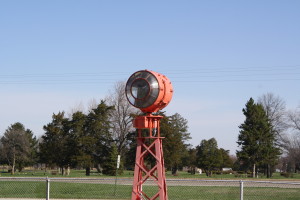 After the Central Illinois Regional Airport decided to replace the old airport beacon, the Museum was able to acquire it. Plans were developed to create a miniature tower and install the airport beacon in the Airpark. The installation of the Airport Beacon Tower was completed on September 3, 2013.
After the Central Illinois Regional Airport decided to replace the old airport beacon, the Museum was able to acquire it. Plans were developed to create a miniature tower and install the airport beacon in the Airpark. The installation of the Airport Beacon Tower was completed on September 3, 2013.
An aerodrome beacon or rotating beacon is a beacon installed at an airport or aerodrome to indicate its location to aircraft pilots at night. An aerodrome beacon is mounted on top of a towering structure, often a control tower, above other buildings at the airport. It produces flashes not unlike that of a lighthouse.
Airport and heliport beacons are designed in such a way to make them most effective from one to ten degrees above the horizon; however, they can be seen well above and below this peak spread. The beacon may be a unidirectional flashing xenon strobe or it may be an aero beacon rotating at a constant speed which produces the visual effect of flashes at regular intervals. Flashes may be of just a single color, or of two alternating colors.
In the United States, the Federal Aviation Administration (FAA) has established at what rate airport beacons flash and what color combinations are used. Flashing rates of 24 to 30 per minute are used by beacons marking airports, landmarks, and points on Federal airways. Flashing rates of 30 to 45 per minute for beacons marking heliports. White and green are used for lighted land airports; white and yellow for lighted water airports; green, yellow, and white for lighted heliports; white, white, and green for military airports; and white, green, and red for hospital and/or emergency services heliports.
Operation of the airport beacon during the hours of daylight often indicates that the ground visibility is less than 3 miles and/or the ceiling is less than 1,000 feet. Regardless of the weather conditions, the FAA has no regulation that requires airports to turn the beacon on during the day.
In Canada the regulations are different. Lighted aerodromes are equipped with white single flash beacons operating at a frequency of 20 to 30 flashes per minute. Heliports with beacons exhibit the Morse Code letter H (4 short flashes) at a rate of 3 to 4 groups per minute.
The project started in July 2013 when John Ohler asked Gary Volk to draw up the prints of the framework for the tower. As Gary started his work Doug Reeves and John Ohler coordinated the forming and pouring of the base to mount the tower. The steel was purchased and taken to the shop of Doug Reeves brother Barry Reeves in Towanda, IL so we could start the fabrication of the tower. The first night John Rice and Eric Maffei helped to get started with some of the layout work and cutting steel.
The next day the team finished cutting the remaining steel and assembly started to take shape. Eric Maffei also helped with the fabrication. The second night was spent working on the beacon light tower. The team had to install the top mounting plate and the foot mounting pads. John Eckley provided the truck and trailer for transportation of the steel purchased at Tick Steel to the Towanda shop. Creating the tower was a nice part of this project for John Ohler, as he had never used a plasma cutter in his life and it worked well.
Aaron Anderson welded all the tower parts and John Rice had Associated Sandblasting do the sandblast and paint on the tower. John Eckley also provided the trailer and truck to haul the welded tower to Associated Sandblasting. Aaron Anderson and John Rice brought the tower to the Air Park and using a crane provided by Aaron they set it in place on the pad.
On September 3, 2013 Aaron Anderson again provided a crane to mount the beacon on the tower. Philip Gray rewired the beacon motor and internal light. Doug Reeves and John Ohler ran conduit and wire into the museum and connected the beacon to the power panel and a switch to turn it on and off. The beacon can now be turned on and off at the light switches by the front door, the switch is the one at the far east nearest to the bookcase. A label was placed over the switch that reads “BEACON”.
Work on the frame to hold the Tower Beacon was a fun project for everyone on the team. This is what makes a project of any type fun and worth doing, the teamwork from a number of members and volunteers all working for one main cause.
